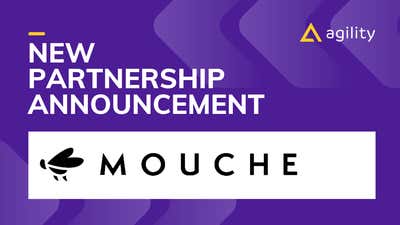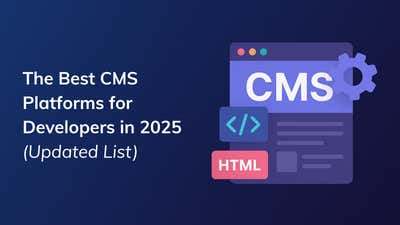List of Top CMS Security Vulnerabilities
(And How a Headless Architecture Mitigates Them)


According to the US National Vulnerability Database (NVD), in 2020,103 security vulnerabilities were disclosed. This is the highest number of security vulnerabilities ever recorded and almost quadruples the number of vulnerabilities in the past decade. From these,70% provided malicious actors with an attack vector.
This is a scary prospect for any company looking to build or maintain its digital presence as it leaves you vulnerable to all kinds of cyberattacks. While having a CMS gives you an extra layer of security, not every CMS is created equal. Traditional —or coupled CMS— like WordPress or Drupal are often even more vulnerable to attacks. This article discusses the top CMS security vulnerabilities and how enlisting a Content Platform with Headless CMS architecture can mitigate them.
What Is a Security Vulnerability, Anyway?
The NVD defines a vulnerability as “a weakness in the computational logic (e.g., code) found in software and hardware components that, when exploited, results in a negative impact to confidentiality, integrity, or availability.”
In the context of a CMS, a vulnerability occurs when a malicious actor targets a CMS platform for something other than its intended purpose. The hacker exploits that access to compromise the CMS’ underlying infrastructure to gain access to the servers or initiate attacks against other tenants.
How a Headless CMS prevents the top 6 Security Vulnerabilities?
The collaborative nature of CMSs increases the number of potential attack surfaces. If you add multiple users with different notions of cybersecurity to the mix, the number of potential vulnerabilities can sharply increase. Let’s take a look at the most common CMS security vulnerabilities.
SQL Injection
SQL injections are among the most common attacks on CMSs. SQL injection is similar to other injection attacks because it introduces arbitrary SQL code into the database layer. This enables attackers to issue direct database commands and manipulate the database as if it were the CMS user. Due to the new security measures CMSs —especially headless CMS— have implemented and the relatively easy methods to foil these attacks, they are less effective every day. Headless CMSs can mitigate these attacks to the databases by enabling you to use non-SQL databases to store and distribute your content or give you different CDN options if you want to use SQL.
Brute-force Attacks
Brute-force attacks can be carried out by almost everyone since they involve entering multiple login credentials over a period of time until the right one is discovered. Some CMSs don’t limit the number of login attempts by default which means that users leveraging those CMSs are exposed to malicious actors who can enter hundreds or thousands of credentials until they find one that works. Even if a brute force attack fails, it can still wreak havoc on your server, as too many attempts will overload and slow your system down. A headless CMS uses sign-in and authentication protocols and monitors logins with automated tools to identify login abnormalities and mitigate brute-force attacks.
DDoS
Distributed denial-of-service is an enhanced version of the denial-of-service attack where a malicious actor sends a large volume of requests to a server with the purpose of making it crash or inaccessible to its intended users. DDoS attacks are often executed via many different machines —also known as botnets— which hide the origin of the requests. Modern headless CMSs render the content on the client side using APIs and reduce the load on the server each time a visitor accesses the website, reducing the impact of potential DDoS attacks.
Arbitrary Remote Code Execution
While arbitrary code injection requires more resources than other kinds of cyberattacks, injecting code into a website or app can have nefarious consequences to the users’ privacy and data. Arbitrary remote code execution makes use of any attack surface. It sends a piece of PHP code to the remote execution environment. Without proper security, it will run as if it were from the user, opening remote backdoors for attackers to gain access to the target environment. This type of attack can compromise nonSQL databases, but headless CMS can prevent this type of attack by tightening the security rules in the hosting environment.
Cross-Site Scripting (XSS)
This type of CMS vulnerability exploits the client environment within the browser, which allows an attacker to inject arbitrary code into the target’s instance and environment. This attack occurs on the client side, which means that it can compromise sensitive user data and allow for manipulation of the databases and stored variables. Traditional CMS platforms like Drupal and WordPress are particularly vulnerable to XSS vulnerabilities due to their heavier use of client-side environments. Headless CMSs that leverage server-side rendering mitigate potential XSS attacks. Server-side rendering protects the databases so that if they manage to gain access to the client-server, the rest of the information that wasn't queried should be safe.
File Inclusion Exploitation
File inclusion vulnerabilities are often found in poorly coded sites. This kind of vulnerability occurs when a site allows users to input or upload files to the server. The PHP code does not validate the input resulting in malicious files being delivered to the server. In file inclusion exploits, users can gain access to sensitive data when the servers are misconfigured, or the user has high privileges. A headless CMS can mitigate this vulnerability by restricting permission to upload files to the website and keeping a whitelist of allowable file types to prevent malicious files from entering into the server.
Securing Your Content Platform: Best Practices and Why Agility is Your Best Choice
As you know, keeping your website secure is critical. When it comes to selecting a Content Platform, you want to make sure you are choosing one that offers top-of-the-line security features rather than just a CMS or a Headless CMS. Agility is committed to delivering enterprise-grade security to all our customers.
Here are some of the best practices we recommend to secure your Content Platform:
- Choose a vendor that handles maintenance and updates for you to mitigate the risks of not updating.
- Sanitize and restrict user input to prevent injection attacks.
- Perform regular database backups.
- Use strong passwords and store them as encrypted values.
- Always use SSL certificates on your web server.
- Rename admin directories to something other than ‘admin.’
- Keep track of the latest vulnerabilities of your Content Platform.
- Leverage two-factor authentication for an additional layer of security.
- Scan your website using penetration testing tools.
At Agility, we take security very seriously. Our Content Platform is designed with security in mind from the ground up. We leverage headless architecture to provide you with the highest level of security for your products and sites.
Our security features include:
- Authentication with Auth0.
- Backed by Microsoft Azure.
- Auto-Scale.
- Encryption and data storage.
- How your data is backed up.
- Message Encryption.
- Penetration tests.
- Getting access to backend data.
- Ongoing security assessments.
- Audits and monitoring.
- PCI Compliance.
- SOC2 Compliance.
- Security incident reporting.
With features like Auth0 authentication, solid CDN options, and server-side rendering, Agility cooperates with you to thwart even the most determined cyberattackers. Our security scales with you and supports you as you build your website.
We are committed to keeping your website secure, and we are confident that Agility is your best choice for a Content Platform that takes security seriously.

About the Author
Joel is CTO at Agility. His first job, though, is as a father to 2 amazing humans.
Joining Agility in 2005, he has over 20 years of experience in software development and product management. He embraced cloud technology as a groundbreaking concept over a decade ago, and he continues to help customers adopt new technology with hybrid frameworks and the Jamstack. He holds a degree from The University of Guelph in English and Computer Science. He's led Agility CMS to many awards and accolades during his tenure such as being named the Best Cloud CMS by CMS Critic, as a leader on G2.com for Headless CMS, and a leader in Customer Experience on Gartner Peer Insights.
As CTO, Joel oversees the Product team, as well as working closely with the Growth and Customer Success teams. When he's not kicking butt with Agility, Joel coaches high-school football and directs musical theatre. Learn more about Joel HERE.



